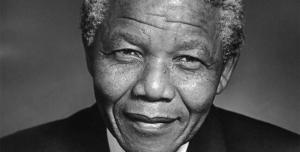Nelson Mandela. Freedom fighter, diplomat, and winner of the 1993 Nobel Peace Prize; Mandela represents the end of apartheid in South Africa, and was the first democratically elected president of that nation and consistently introduced policies aimed at combating poverty and inequality and promoting reconciliation.
However, ‘Nelson’ is not his birth name. It was given to him by an English teacher at the age of 15, a name change that introduced a far greater capacity for leadership and humanitarian work into his chart than he had as ‘Rolihlahla Mandela’. Mandela’s birth name has an 11 destiny number, channeled by the very fortunate addition of the name ‘Nelson’ into a 9 destiny number. The name change also gave him 5 ones, 5 threes, and 5 fives in his name, the number 5 being representative of the element of change, it’s no surprise that he brought great change to his nation and the world. The original destiny number of 11 is still valid, a very inspirational, high-energy, charismatic number that can also be over-sensitive and a bit neurotic.
As I see it, the addition of the first name of ‘Nelson’ gave Mandela a level of inner strength, leadership ability, humanitarian drive, and capacity to be a catalyst for change that he may have never had were it not for one English teacher calling him ‘Nelson’ and the name stuck.
Here is a partial list of some of Nelson Mandela’s accomplishments as President of South Africa (source wikipedia):
- The introduction of free health care (1994) for all children under the age of six together with pregnant and breastfeeding women making use of public sector health facilities (a provision extended to all those using primary level public sector health care services in 1996).[94]
- The launching of the Reconstruction and Development Programme, which invested in essential social services such as housing and health care.
- Increases in welfare spending, with public spending on welfare and social grants increased by 13% in 1996/97, 13% in 1997/98, and 7% in 1998/99.”[95]
- The introduction of parity in grants for communities which were previously, including disability grants, child maintenance grants, and old-age pensions, which had previously been set at different levels for South Africa’s different racial groups.[95]
- The extension of the application of the child maintenance grant to blacks in rural areas, who had been previously excluded from the system.[95]
- A significant increase in public spending on education, with expenditure raised by 25% in 1996/97, 7% in 1997/98 and 4% in 1998/99.[95]
- An expansion of reproductive health services.[96]
- The Land Restitution Act of 1994, which enabled people who had lost their property as a result of the Natives Land Act, 1913 to claim back their land, leading to the settlement of tens of thousands of land claims.[97]
- The introduction of child support grants (1998) to alleviate child poverty.[99]
- The connection of 3 million people to telephone lines.[101]
- The bringing of 1.5 million children into the education system.[101]
- The upgrading or construction of 500 clinics.[101]
- The connection of 2 million people to the electricity grid.[101]
- The construction of 750,000 houses, housing nearly 3 million people in the process.[101]
- The extension of water access to 3 million people.[101]
- The introduction of compulsory schooling for African children between six and fourteen years.[102]
- The provision of free meals for between 3.5 to 5 million school children.[103]
